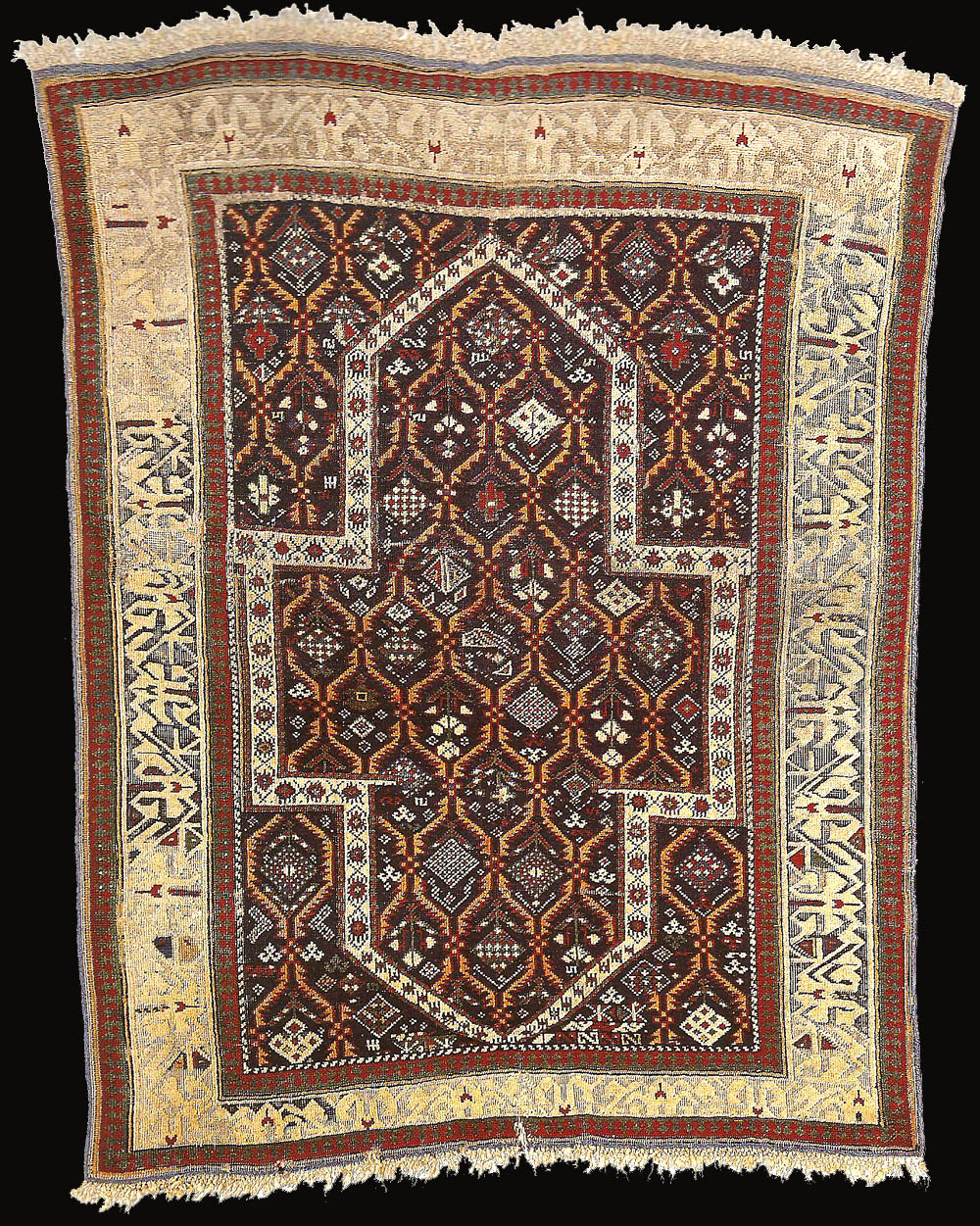|
Plate no: 41
mid-19th century
1.07 x 1.35m (3' 6" x 4 '5")
This rug, with its naturalistic flowers in a latticed field, is a later
version of the type shown in
plate 42. The field is
of similar colouring to that example, and both rugs also share the elaborate
arabesque variant border (heavily corroded in this piece) and the medachyl
(reciprocal trefoil) guard borders. Its double-niche format is apparently
unique for a Kuba rug. The flowers are drawn with none of the idiosyncratic
peculiarities one expects
from rugs in this group, such as the tripartite tulip and flowers with
leaves on one side of the stem;1 instead they display certain Daghestan
characteristics such as diamond-shaped flowerheads (see plate 55). The rug
also has the marked depression of alternate warps, another Daghestan
characteristic; indeed the rug's owner, Ross Winter, prefers a Daghestan
attribution. The original knotted mesh ends are typical of the Kuba group,
however, and the rug displays many other Kuba features. The direction of the
flowers would seem to indicate that the taller of the two arches was
intended as the top.
Published at
Ralph Kaffel's Caucasian Prayer Rugs


|


